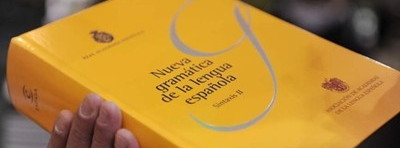 Presente prospectivo
Presente prospectivo
In colloquial Spanish especially, the present tense is frequently used to refer to the future (presente prospectivo or pro futuro1); this can sound strange to English-speaking learners, who have a tendency to overuse the future tense. The present tense can sound rather direct and even rude to the British ear, especially when making a request or asking for help, but it is far more common to say "¿Me pones un café?" than "¿Podría ponerme un café, por favor?". [See also Present tense uses]
Uses:
Suggestions
¿Salimos está noche? —Shall we go out tonight
Asking advice or opinion
¿Qué hago? ¿Lo llamo? — What will I do? Shall I call him?
Offer help
¿Te ayudo? — Will I help you?
Requests
¿Me dejas ese bolígrafo porfi? — Could you lend me that pen please?
¿Me pones un café? — Could I have a coffee?
Threats
Como no me pagues, te mato — If you don't pay me, I'll kill you
Orders [Presente de mandato]
Tú te callas — You, keep quiet
Planned, arranged or scheduled events -especially with verbs of motion such as ir, venir, llegar, salir. In English we often use the present continuous for arrangements and the present simple for scheduled events:
-Juan viene mañana — Juan is coming tomorrow [≈John va a venir]
→Juan venía al día siguiente, así que preparamos la habitación de invitados — Juan was coming the following day, so we prepared the guest room [In the past, the imperfecto prospectivo is used for future events viewed from the past]
→→Juan vino al día siguiente — Juan came the next day
-Este finde jugamos en Málaga — This weekend we're playing in Malaga
-El autobús llega a las 6 p.m. mañana — The bus arrives at 6pm tomorrow [Scheduled]
Confusion
The examples mentioned above are more or less straightforward. Where there is some confusion, however, is in the grey area between present and future tenses when making declarations about future events, including predictions, promises and unplanned decisions. The crossover between the present and future is something that most grammar books tend avoid going into; this is probably because the differences can be hard to identify and explain; e.g. mañana lo hago or mañana lo haré.
In general, the present tense is highly favoured in spoken Spanish, whereas the future predominates in written Spanish, where facts are presented more objectively.
"El empleo de 'canto' por 'cantaré' es especialmente frecuente en la lengua hablada, en la cual se ha señalado reiteradamente, a uno y otro lado del Atlántico, el escaso uso de la forma de futuro y el más escaso aún de su correspondiente forma compuesta 'habré cantado'. El desuso de cantaré viene compensado, por otra parte, con la frecuente utilización de la perífrasis 'voy a cantar' [...]". GDLE
This paper on the Cervantes website summarizes one of the basic differences:
"[...], al usar una forma de presente, el hablante describe un evento futuro y lo atrae hacia el presente, lo actualiza. Este significado de actualización se debe al carácter factual del presente de indicativo: la descripción de un evento futuro mediante una forma factual, hace que el evento se interprete como un hecho y no como una hipótesis". 1
In other words, the present tense brings the event into the present and presents it as being more of a fact than a prediction; this has the effect of making the statement more emphatic, decisive and generally more subjective.
The following examples, taken from the handy Redele website, show the grey area between present and future tenses which English speakers often struggle to fully get their head around. Notice how all the examples are in first-person singular or plural (i.e. the speaker has control over the event).
- Hazme caso, llámala.
+ Sí, tal vez tengas razón, la llamo.
- Mamá, ¿me compras un helado?
+ Bueno, ahora te lo compro.
- Yo creo que lo mejor es escribirle.
+ Vale, mañana le escribimos.
- ¿Me ayudas a traducir esto?
+ Ahora no me apetece. Déjamelo. Esta noche te lo traduzco
"En estos contextos, el uso del futuro o de la perífrasis sitúa la respuesta en otro nivel: no se interpreta tanto como simple aceptación de la petición o de la propuesta, sino más bien como anuncio o, en algunos casos, como manera de aplazar la acción".2
Bear in mind that when using the present to refer to the future, generally speaking, there must be some kind of time marker or other reference to the future to avoid confusion with the present. This could be an adverb of time, e.g. luego, ahora, después, etc.; another adverb, e.g. seguro, fijo, etc.; or another reference which allows us to understand the future meaning. However, in conversation there may be no need to actually use these markers since the context is understood.
Seguro que te llaman — They're bound to call you
Ahora lo hago — I'll do it in a minute
Luego te veo — (I'll) See you later
Vale, se lo digo para que me dejes en paz — Ok. I'll tell her that to keep you off my back
Sí, ahora lo contamos — Yes, we'll talk about that now
Luego te ayudo con eso — I'll help you with that later
¡Qué asco! Eso no me lo como — How disgusting! I won't eat that
-Adios. Estamos en contacto — Bye. We'll be/stay/keep in touch
-¿Le gusta el vestido, señora?
-Sí, me lo llevo
As discussed previously, the present tense is often used in the second part of a conditional (la apódosis) when the result is considered a certainty, a promise, or a threat.
Si se entera mi padre, me mata [≈me matará]
→Como se entere mi padre, me mata [≈me matará; see como+subjuntivo]
-Si me llaman, voy [≈iré]
This grey area also arises with predictions. It is taught that the future tense is used with predictions, yet in spoken Spanish the present tense is common when the speaker deems the event to be a certainty.
-Mañana llueve — It's going to rain tomorrow
-Este verano te lo arreglan, ya verás — This summer you'll have it fixed, you'll see
Once again, the future could be used in these examples but it would make the prediction more speculative rather than stating what the speaker considers to be a fact. Remember, this use of the presente prospectivo is not so common in formal styles and is heard more frequently among children and less educated populations:
"A causa del carácter virtual de la acción venidera, el empleo del futuro supone cierta capacidad de abstracción por parte del hablante. Por esto aparece tarde y es de uso poco frecuente en el habla infantil. Los niños usan con preferencia el presente de indicativo con significado de futuro (van por irán; salto por saltaré) o bien locuciones perifrásticas en presente, como voy a ir, voy a escribir (por iré, escribiré). También los adultos poco instruidos recurren al presente por futuro mucho más a menudo que las personas cultas: este año vamos a coger mucha aceituna, por cogeremos; se lo digo, por se lo diré".2
See also: ir a +infinitivo, futuro de conjetura
In Español-Avanzado Articles
˜
-tiempo presente prospectivo - con valor de futuro-

